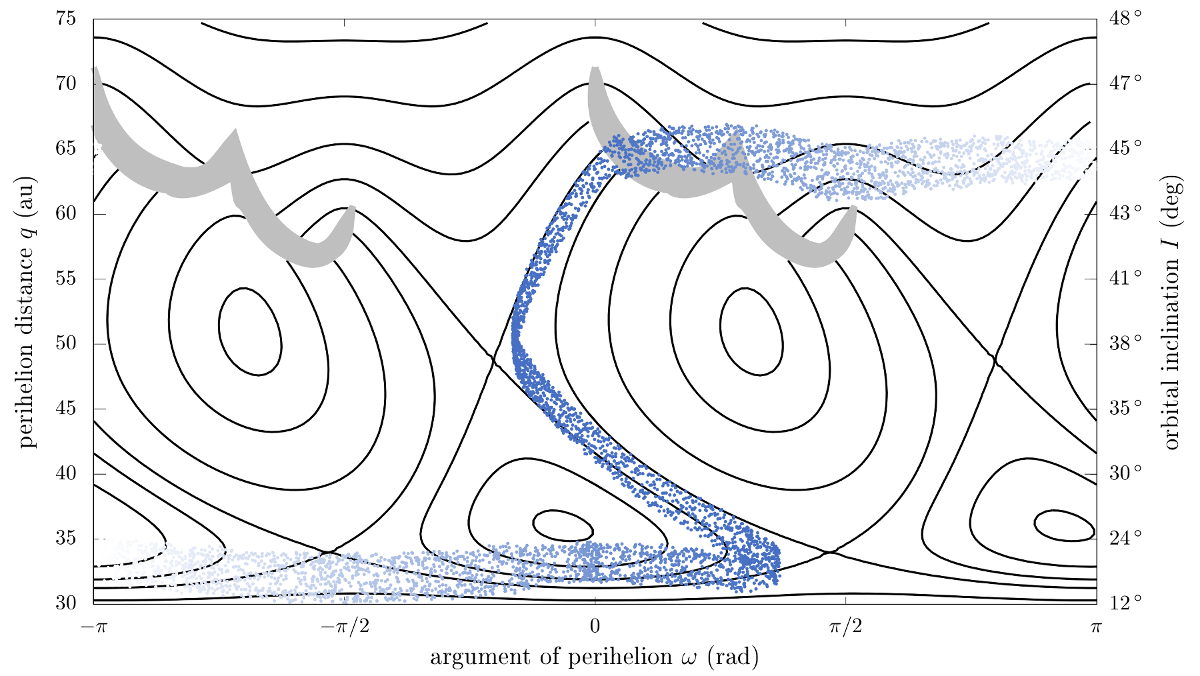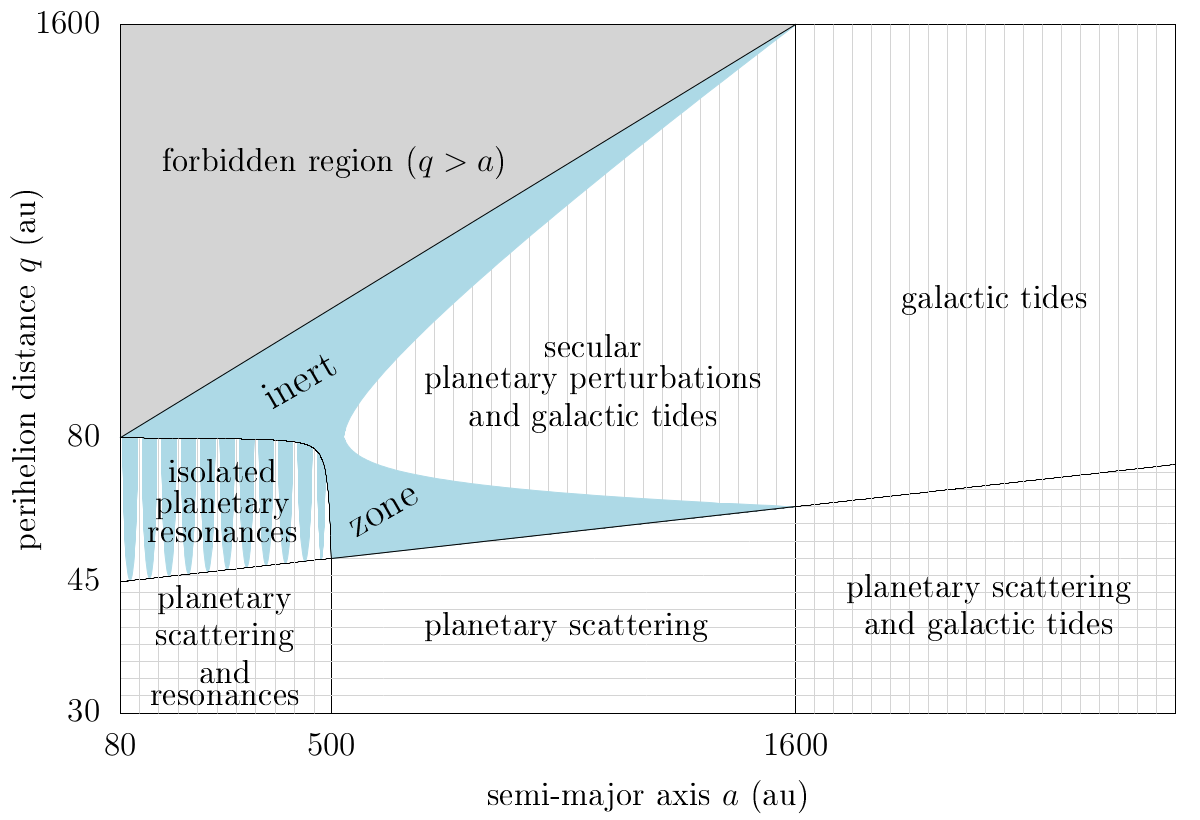
Trans-Neptunian objects are all bodies orbiting the Sun with trajectories beyond Neptune. I am particularly interested in the most distant Kuiper belt objects. Despite very weak orbital perturbations, these bodies have very eccentric orbits, which indicates that they did not form in their current locations but were emplaced there by some unknown mechanism.

The known populations of trans-Neptunian objects have very rich and diverse orbital dynamics. Their trajectories both include very stable quasi-periodic cycles and strong chaotic diffusion, and some objects even undergo stochastic impulses due to the attraction of stars passing in the neighbourhood of the Sun. My recent works are summarised in a review chapter that links the different regions beyond Neptune with their associated kinds of dynamics [xii].
I am involved in a collaborative project together with Marc Fouchard and Alexandre Bougakov (France), Arika Higuchi and Takashi Ito (Japan), Vacheslav Emel'yanenko (Russia), Hans Rickman (Sweden), and Giovanni Valsecchi (Italy). We look for observable signatures of the initial distribution of trans-Neptunian objects and of the Solar System's trajectory in the Galaxy.
I am conducting a global analysis of the orbital dynamics of trans-Neptunian objects through semi-analytical models, which allow us to identify and understand the dynamical pathways generated by planetary perturbations [ii]. These models reveal trajectories leading to very distant and eccentric orbits, as well as a "capture mechanism" able to maintain objects on far-away trajectories for billions of years [iii]. This mechanism creates a reservoir of distant bodies which is continuously replenished with new bodies.


The application of my semi-analytical methods to known trans-Neptunian objects reveal which observed trajectories would require a complex scenario (such as planetary migration or an external perturber), and which trajectories can simply be explained through the influence of known planets on their current orbits [iv].
Beyond a few hundreds of astronomical units, the gravitational field of the Galaxy as a whole produces a differential attraction on trans-Neptunian objects. This "galactic tidal effect" is the dominant mechanism through which long-period comets become observable.

The trans-Neptunian region is the only witness of the variations of the galactic environment of the Solar System. Over long timescales, the galactic tides modify the orbits of distant Kuiper-belt objects, producing wide chaotic regions [xi]. The intermediate region located between the Kuiper belt and the Oort cloud is therefore much less "inert" than what astronomers used to think. For more details, see the IMCCE newsletter #164 (in French).
Thanks to the ESA's Gaia mission, accurate models of the mass distribution in the Milky Way are now available (see Khalil et al. 2024), allowing us to obtain accurate predictions for the motion of the Sun in the Galaxy. As a first step to understand the influence of this motion on distant trans-Neptunian objects, we have developed a new symplectic integrator dedicated to long-term integrations in galactic potentials [xxviii].
In 2016, researchers revived the hypothesis of a still unobserved massive planet lurking beyond Neptune ("Planet 9"). The existence of such a planet would explain why the eccentric orbits of the most distant trans-Neptunian objects (with semi-major axes larger than 200 astronomical units) appear mostly aligned or anti-aligned.
If the Solar System hosts such an exterior massive planet, then the orbital dynamics of distant trans-Neptunian objects would actually be very chaotic. Secular chaos emerges from the stability islands due to the von Zeipel-Lidov-Kozai mechanism. For more and more distant objects, chaos gradually spreads over all possible orbital inclinations, allowing small bodies to toggle between prograde and retrograde orbits [v]. Immersed in the chaotic sea, secular resonances produce orbits that are aligned or anti-aligned with respect to the orbit of Planet 9. These configurations are made of statistical accumulations of chaotic trajectories; therefore, the rejection of the "Planet 9 hypothesis" would require a very large statistical sample of trans-Neptunian objects (whereas a direct observation of this planet would be enough to prove its existence).
Last update: 2025-11.